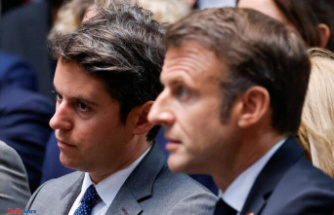the Meteorologists have for years raised concerns about the new technology, the effects of weather satellite activities. Still the most accurate weather forecasts are based on satellites to transmit data.
Earth-orbiting sääsatelliitit measure very small radiation, which predict weather changes.
it is Now feared that the ground for building the 5G network and network devices using confuse these measurement results, because they may interfere with the frequencies, which sääsatelliitit measure.
Satellites used by the frequency is not able to adjust, because it is not sending or mirroring frequency, but the frequency with which for example the earth and the atmosphere of the thermally emitting micro waves.
fine-tuned the satellites are listening passively to these whispers. Accumulated data is used in forecasts and warnings as a basis.
for Example, the satellites measured by the water vapour in the micro wave frequency of about 22 gigaherzin and 5G use spectrum 24,25-27,5 GHz.
Although the frequency bands appear to differ, 5G base stations and mobile phones can send interfering signals, which destroy the thermal radiation measurement. 5G-signals operate on a different frequency band, but the interference effect extends to a wider.
the Developing technologies seek to use increasingly higher frequencies. However, they are almost the same, with different measuring devices now work.
the Corresponding dimensions of the equipment to radio interference caused at the moment, for example, the big military radars.
New technology, or more accurate weather forecasts?the International telecommunication union ITU (switch to another service) decided in October-November WRC-2019, the world radio communication conference in 5G technology required by the frequency of the practice.
the World meteorological organization (WMO) secretary-general mr Petteri taalas to keep the newly-made WRC-2019 world radiocommunication conference decisions as harmful.
– WRC-19-the decision can be significantly weakened at the frequency band of the collected data accuracy. It would endanger maahavainnointeja the following satellite systems operation, which is essential to all national meteorological services weather forecasting and warning function, the Dollar notes WMO's bulletin (switch to another service).
– Possible effects can be felt in several impact areas, including aviation, marine, agriculture, meteorology and extreme events, warnings, as well as the connection to our ability to monitor climate change in the future.
Dollar that reduced the security value can be a real risk of weather satellites.
It can lead to almost ten times greater that interferes with or disrupts the lane outside the discharge than what the WMO had recommended.
Typhoon Hagibis to approach Japan in October to take in the satellite image.NASA / EPAthe Finnish meteorological institute, space and remote sensing center division director Jouni Pulliainen estimates that in some areas accurate weather satellite observation can stay without getting.
the ocean area information may be, but especially in the continent of dense 5G networks in the regions of the disadvantages would be felt.
Satellites are now the main source of information, which guarantees the weather forecast of a good quality. If the 5G-technology block satellite operation, it can seriously weaken the weather forecasting for the quality, Joe says.
Society has many ways sääriippuvaista quality. If the forecasts of worsening weather events, such as destructive storms, anticipation of deterioration.
Irma-hurricane as seen from space the Us space administration satellite animation. Source: NasaUusien frequency permits the effect of ambiguousthe International telecommunication union was convened at Egypt's Sharm el-Sheikh 28. from October to November 22. until the date determined by a different frequency relating to practice.
European union already last may adopt its own 26 GHz frequency authorisation decision, where the 5G-technology spectrum protection limits are now made more stringent.
the security limits defined as the passive transport of species protection of the adjacent frequency band 23,6–24 GHz.
This means, inter alia, remote sensing satellite traffic, like weather satellites, and radio astronomy. Radio astronomy (switch to another service) is the star of the science, which is specializes in radio waves, the wavelengths of the incoming radiation detection and research.
the EU's spring decision, member states shall ensure that terrestrial systems will protect them properly in the adjacent frequency band of the systems. In particular, the earth research satellite services and radio astronomy service systems are to be protected.
so the Question is, how much 5G reserved frequency interfere with adjacent frequencies.
Base excess of the total radiated power for the maximum value of the EU was defined -42 dBW (desibeliwatti) and terminal equipment with regard to -38 dBW, when the measurement bandwidth is 200 MHz
Now the world telecommunications union meeting decided, the corresponding values are the base station -33 dBW and devices to 29 dBW.
These values are valid 1. September 2027 until. This will come into force after the most stringent value (-39 dBW and -35 dBW), which, however, are lower than the spring of the adopted european values.
This has added to the fear meteorologists among the base stations and terminal devices radiation interferes or obscure meteorological satellite measurements by the atmospheric and earth radiation, which on the basis of variations that we can predict changes in the weather.
the Satellites are investigating the Ground surrounding the Van Allen radiation zones.NASARadiotaajuusasiantuntija is not as concerned aboutthe Transport - and communication agency Traficom monitoring and control in Finland, the use of radio frequencies. Agency specific expert Jan Engelberg participated in the Egyptian radio communication conference, where it was also decided to 5G-technology required by the frequency of the practice.
Engelberg is currently in Brussels to the European union radio spectrum committee meeting. There to reflect on how now of the different limit values to proceed with. Engelberg understand the meteorology of concern, but the effects are not so dramatic.
– Global agreements are often made a little pessimistic starting-point-assessment. The situation is actually maybe go so bad, although the protection value would be a bit looser, a special expert Jan Engelberg's assessment.
a Lot depends on what kind of equipment the manufacturers will eventually bring to market.
it Is possible that in Europe to stick to the strict most of the protection value, but it does not guarantee your weather satellite operations. The rest of the world have different values, and sääsatelliitit flying around the earth collecting data.
engelberg according to the european values were agreed after long discussions and they, too, are compromises.
you Can discuss the topic until 22: 00.
see also:
Antti Haanpää, Stina Import / YleSee how the temperature has already changed and will change your home region. Enter your date of birth and our machine tell it as well as many other sääknoppia.
Subscribe Yle newsletters!Get Overeating the best content straight to your inbox!
Proceed to order Date Of Update: 23 December 2019, 10:17











